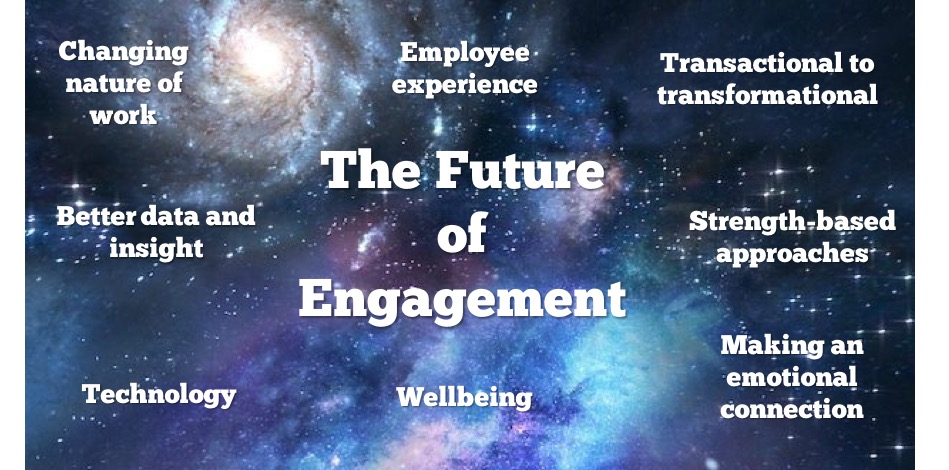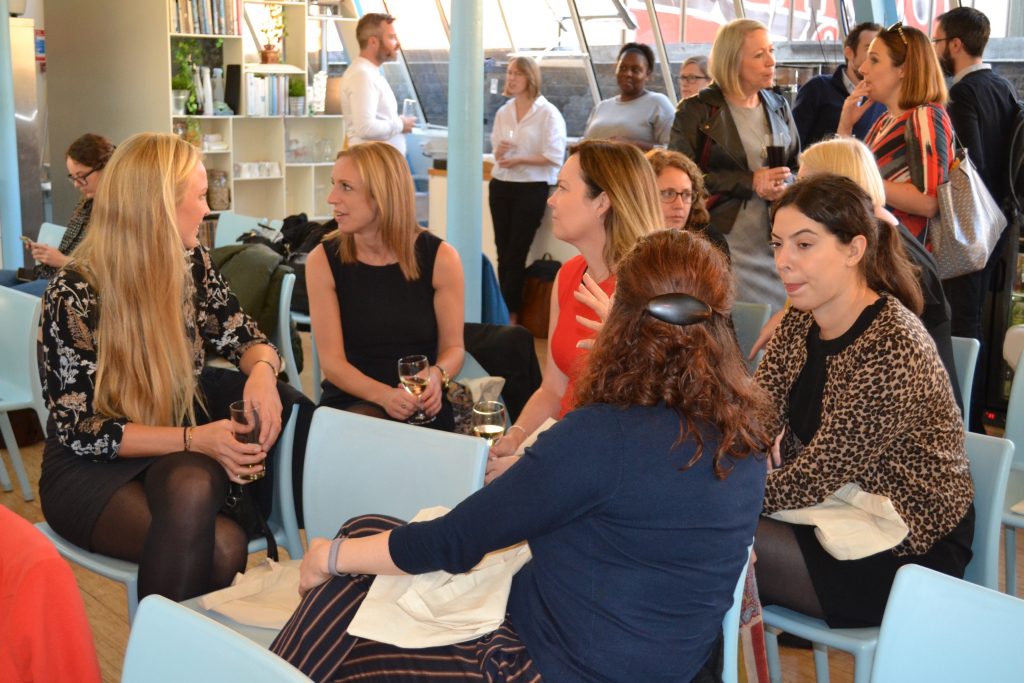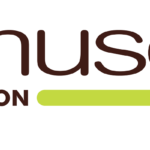An Evening of Engagement
What does the future of engagement look like? What is purpose, why does it matter and how do you find it? How do you create the big picture story? When is employee voice, not employee voice? How can listening to it bring a business back from the brink?
These questions and more were answered by Emma Bridger of People Lab and her special guests at ‘An Evening of Engagement’ to mark the launch of the second edition of Emma’s book Employee Engagement: A Practical Introduction. Hosted at Wallacespace in London’s Covent Garden, Emma’s guests shared their experiences and answered questions from the floor.
What are the key trends which will shape the employee engagement debate in the years ahead?

Emma Bridger’s keynote slide
Certainly, there’s an ambition that we’ll move towards a more transformational approach, rather than the dry, transactional or tick box. The Engage for Success movement’s Four Enablers being a great framework to deliver transformation. Helped by a greater focus on taking a strengths-based approach. This means focussing on people, teams and businesses when they are ‘at their best’, setting positive ambitions grounded in truths rather than dwelling on the negatives.
There will be a growing recognition of the importance and value of making emotional connections inside businesses. Something we’re already seeing and which Chris Crofts, Global Employee Engagement Director at Diageo focussed on in ‘Why we need a ‘purpose’ uprising’. In her view making an emotional connection is key to creating a great purpose, along with being able to articulate how you are improving your customers’ lives and the wider world. Chris revealed her own personal ambition to make people cry when they view her corporate films! Yes, even when sharing the financial results.
Craig Smith at BigPicture Learning picked up the emotional theme. He described how to help organisations tell their stories, and quite literally, share the bigger picture with their people. Craig stressed the importance of employee involvement in dialogue and debate around this process, a theme picked up by Michael Silverman of Crowdoscope.
No surprise that tech will be at the heart of all our futures and Michael’s overview of employee voice stressed how new technologies can help us draw better insight from networks of people interacting. This is radically changing the concept of employee voice. I loved Michael’s early images of fabulously long-haired and hippyish Berkeley students experimenting with early ways to capture, share and debate feedback – prototype Facebooks created out of brown cardboard boxes years before Zuckerberg was even a glint in his father’s eye. Michael argues traditional surveys are not really ‘employee voice’ at all and that it’s only true ‘voice’ when it’s in an open forum able to be discussed, shared, debated and expanded upon. I’m sure he’s right and his concept of ‘social collective intelligence’ tools will be key in the future. Having used tools like waggl with my own clients I’m convinced of the value and insight they can bring.
Finally, the big debate – the constant search for the shiny new toy, the latest big thing. Will the concept of employee experience win over employee engagement? Why does it have to be one or the other?
I’m with Emma. A great employee experience helps build employee engagement; an engaged workplace creates a great employee experience. Let’s stop arguing about semantics and focus instead on creating workplaces where the experience of employees is great, where engagement levels are high and where success comes as a result. The kind of organisation that Kate Griffiths-Lambeth, Director of Human Resources at Charles Stanley described. An employee focussed transformation, grounded in a real sense of ‘what good looked like’ and which brought the business, not only back from the brink, but to a position where their net promoter score soared, business returned to profit and a clutch of awards won.
An evening of big questions, big pictures and a thought-provoking weave of the key themes we’ll need to be thinking about for the future. If you want more of the answers you’ll need to read Emma’s book!

This blog first appeared as a guest blog by Jo on All Things IC




